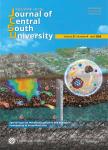Tunnel face reliability analysis using active learning Kriging model——Case of a two-layer soils
主动学习型克里金模型在掌子面可靠度分析中的应用——以双层土隧道为例(英文)作者机构:School of Civil Engineering Central South University Changsha 410075 China Antea Group Antony France
出 版 物:《Journal of Central South University》 (中南大学学报(英文版))
年 卷 期:2019年第26卷第7期
页 面:1735-1746页
核心收录:
学科分类:0810[工学-信息与通信工程] 081406[工学-桥梁与隧道工程] 0806[工学-冶金工程] 08[工学] 0805[工学-材料科学与工程(可授工学、理学学位)] 0703[理学-化学] 0814[工学-土木工程] 0812[工学-计算机科学与技术(可授工学、理学学位)] 082301[工学-道路与铁道工程] 0823[工学-交通运输工程]
基 金:Projects supported by the China Scholarship Council
主 题:reliability analysis tunnel face Kriging model active learning function failure probability
摘 要:This paper is devoted to the probabilistic stability analysis of a tunnel face excavated in a two-layer soil. The interface of the soil layers is assumed to be positioned above the tunnel roof. In the framework of limit analysis, a rotational failure mechanism is adopted to describe the face failure considering different shear strength parameters in the two layers. The surrogate Kriging model is introduced to replace the actual performance function to perform a Monte Carlo simulation. An active learning function is used to train the Kriging model which can ensure an efficient tunnel face failure probability prediction without loss of accuracy. The deterministic stability analysis is given to validate the proposed tunnel face failure model. Subsequently, the number of initial sampling points, the correlation coefficient, the distribution type and the coefficient of variability of random variables are discussed to show their influences on the failure probability. The proposed approach is an advisable alternative for the tunnel face stability assessment and can provide guidance for tunnel design.



